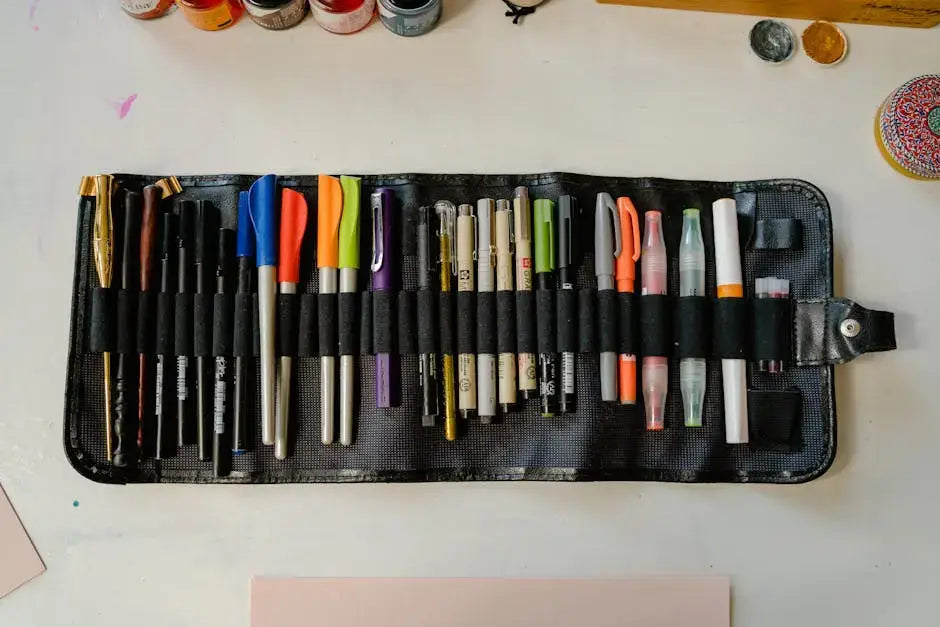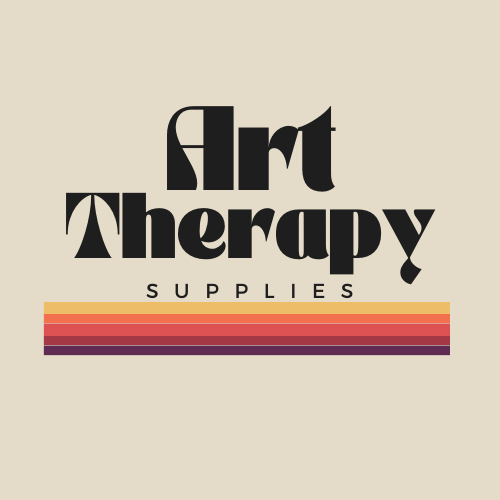Art therapy presents a unique and enriching avenue for individuals seeking to express their emotions and delve into their creative potential. Regardless of whether you are an experienced artist or just beginning to explore your artistic side, having access to diverse materials enhances your art therapy collection, allowing for a deeper and more fulfilling experience. Here are some exciting and distinctive materials worth considering to elevate your practice.

1. Watercolor Paints for Gentle Blending
Watercolors are cherished for their subtlety and ability to create serene visuals that evoke feelings of peace. Their unique blending capabilities make them ideal for expressing complex emotions gently. As you manipulate the fluidity of watercolors with a brush, they encourage a profound engagement with your inner feelings. The mesmerizing way colors swirl and combine allows for a visual representation of your emotional landscape that often transcends verbal expression.
Diving into various watercolor techniques can deepen your creative journey further. Techniques such as wet-on-wet allow for soft transitions in color, while wet-on-dry techniques can yield striking lines. Each technique invites you onto a meditative path, reminding you to slow down and be present in the moment as you explore your emotional depth through art.
2. Acrylic Inks for Bold Expressions
Characterized by their vibrant palette, acrylic inks are fantastic for creating vivid and energetic pieces on numerous surfaces. Their quick-drying properties facilitate layering, making them particularly appealing for those who thrive in fast-paced creative environments. With acrylic inks, you can boldly contrast colors that resonate with your current emotional state, capturing moments of brilliance in your artwork.
The versatility of these inks extends to various techniques. You may use a dropper for intricate details or a brush for sweeping strokes, allowing your feelings to guide your artistic choices. By embracing spontaneity, you transform raw emotions into compelling visual narratives, channeling your creativity fully with each stroke.
3. Colored Pencils for Precision Detail
Colored pencils are indispensable for adding intricate details and smooth shading to your artwork. Ideal for traveling artists due to their portability, they make it easy to spark creativity wherever inspiration strikes—be it in the great outdoors or the comfort of your home. The convenience of colored pencils invites you to engage in spontaneous creativity, letting ideas flow freely.
Moreover, the technique of blending colored pencils adds richness to your work. Layering colors creates multidimensional effects that can evoke various emotions, mirroring your personal evolution in the process. Utilize a colorless blender pencil to achieve seamless transitions and deepen the impact of your drawings, enhancing the emotional connection within your art therapy collection.
4. Pastels for Rich Texture
Soft and oil pastels bring unique qualities that enrich the texture of your creations. Their capability for blending and layering makes each piece come alive with vibrancy and depth. The tactile sensation of pastels gliding over paper invites exploration of varying textures, unlocking new avenues for creativity.
Utilizing pastels can become a sensory experience, connecting you to the material world as you feel the resistance of the paper against the strokes. Allow yourself to be bold with colors; every mark is a testament to the freedom of expression inherent in art therapy, enabling you to articulate your emotions visually without hesitation.
5. Charcoal for Dramatic Effects
Charcoal is renowned for producing rich, deep tones, evoking a powerful emotional essence in any artwork. Its versatility enables both delicate shading and strong lines, consequently expanding your range as an artist. Each stroke with charcoal can convey complex feelings that are frequently hard to articulate through words, encapsulating intimate moments in an impactful visual format.
Alongside traditional charcoal sticks, incorporating charcoal pencils allows for more precision in your work, offering a different texture and enhanced control. The inherent messiness of charcoal will often lead to a sense of spontaneity, encouraging a liberated approach to your creative expression and further enriching your art therapy journey.
6. Gel Pens for Fun Details
Gel pens provide a delightful way to add intricate details and highlights to your artwork. Available in an array of colors and styles—including glitter and metallic options—they add a playful dimension to your collection. The fine tips of gel pens are perfect for crafting whimsical designs or delicate accents that breathe life into your projects.
Integrating gel pens within your artistic practice allows you to layer additional elements over other mediums. For instance, accentuating a watercolor painting or outlining a charcoal sketch brings new vibrancy to your work, transforming straightforward compositions into intricate masterpieces filled with character.
7. Mixed Media for Unlimited Possibilities
The integration of various materials offers limitless opportunities for creative exploration. Mixed media encourages the marriage of diverse textures, colors, and forms, leading to liberated self-expression. With no rigid boundaries, combining paints, collages, and doodles might lead to unexpected joy and discovery during your art therapy sessions.
This expressive freedom can serve as a therapeutic tool, allowing various layers to elicit moods and stories that reflect your multifaceted identity. As you experiment with different layers and combinations, the resulting artwork becomes a journey of self-exploration, clarifying your thoughts and emotions through each interaction.
8. Collage Supplies for Personal Narratives
Collage art, created from old magazines, papers, and photographs, allows you to visually narrate your experiences and aspirations. This method of self-expression invites contemplation of memories, encapsulating your story in layers. The eclectic nature of collage celebrates the diversity within your identity, mirroring the rich tapestry of life.
Enjoy the process of gathering and assembling pieces, as this practice nurtures a deeper connection with your past. You may discover images that evoke joy or words that resonate with your current state. Each layer within your collage serves as a visual diary, intricately depicting who you are becoming.
9. Stickers for Instant Inspiration
Stickers add a whimsical touch to any piece and can serve as powerful sources of creativity. They're ideal for decorating journals or enhancing mixed media works. Choosing stickers not only brings delight but can also ignite inspiration, transforming mundane pages into colorful canvases of ideas and expressions.
Utilizing stickers as focal points may guide your artistic direction, allowing you to creatively articulate thoughts and feelings. Each sticker can embody a sentiment or memory, contributing a joyful and confident aspect to your artistic journey, encouraging you to explore your emotions more freely.
10. Textured Paper for Unique Layers
Incorporating various types of textured paper into your artworks can significantly enhance depth and interest. Exploring options like handmade papers or mulberry can unlock exciting effects, stimulating your creativity. The tactile quality of textured paper fosters a new sensory engagement, further strengthening your bond with the artwork being created.
Experiment by layering different papers with other mediums to observe how they respond to one another. For instance, applying watercolor paint atop textured paper may yield astonishing visual results, highlighting the unique interplay between various artistic elements. This explorative process can nurture creativity, illuminating your preferences and potential discoveries along the way.
11. Embroidery Floss for Decorative Touches
Adding embroidered stitches to your artwork introduces a tactile element that enriches both visual and sensory appeal. By utilizing colorful embroidery floss, you can weave your emotional narrative into your pieces. The stitching process itself can be therapeutic, requiring concentrated attention, effectively decluttering your mind as you create.

